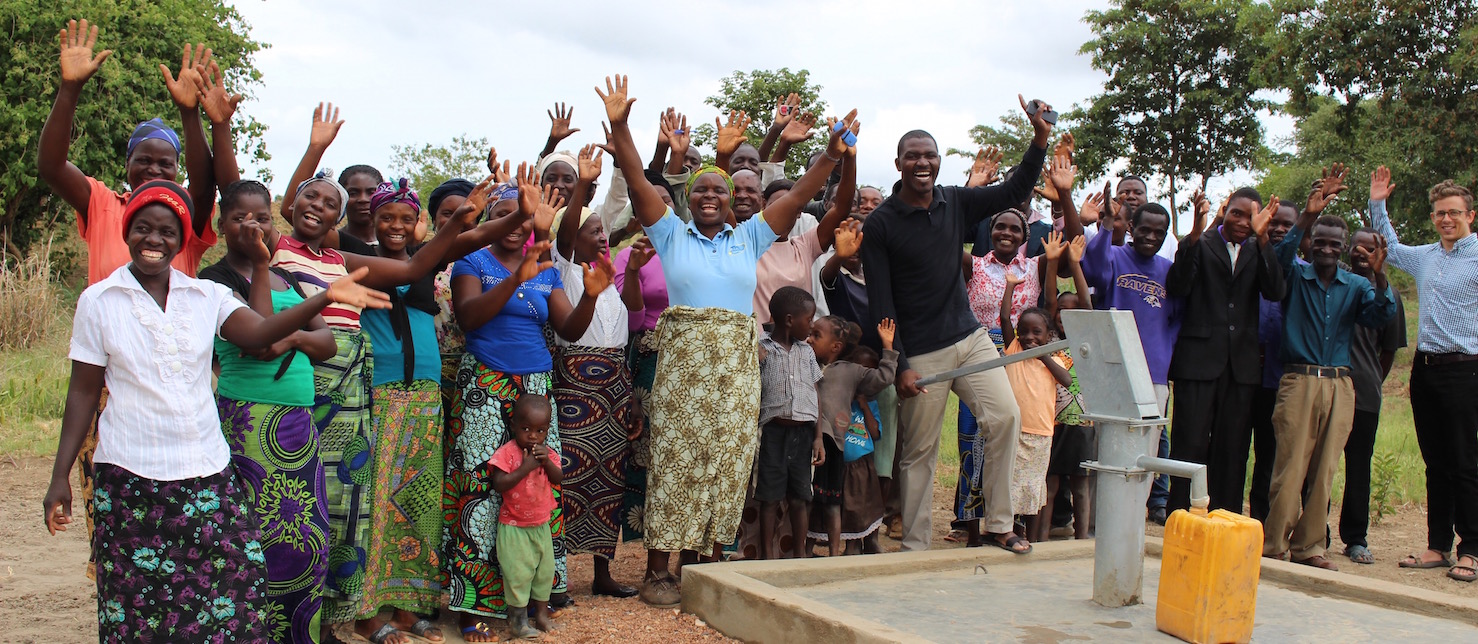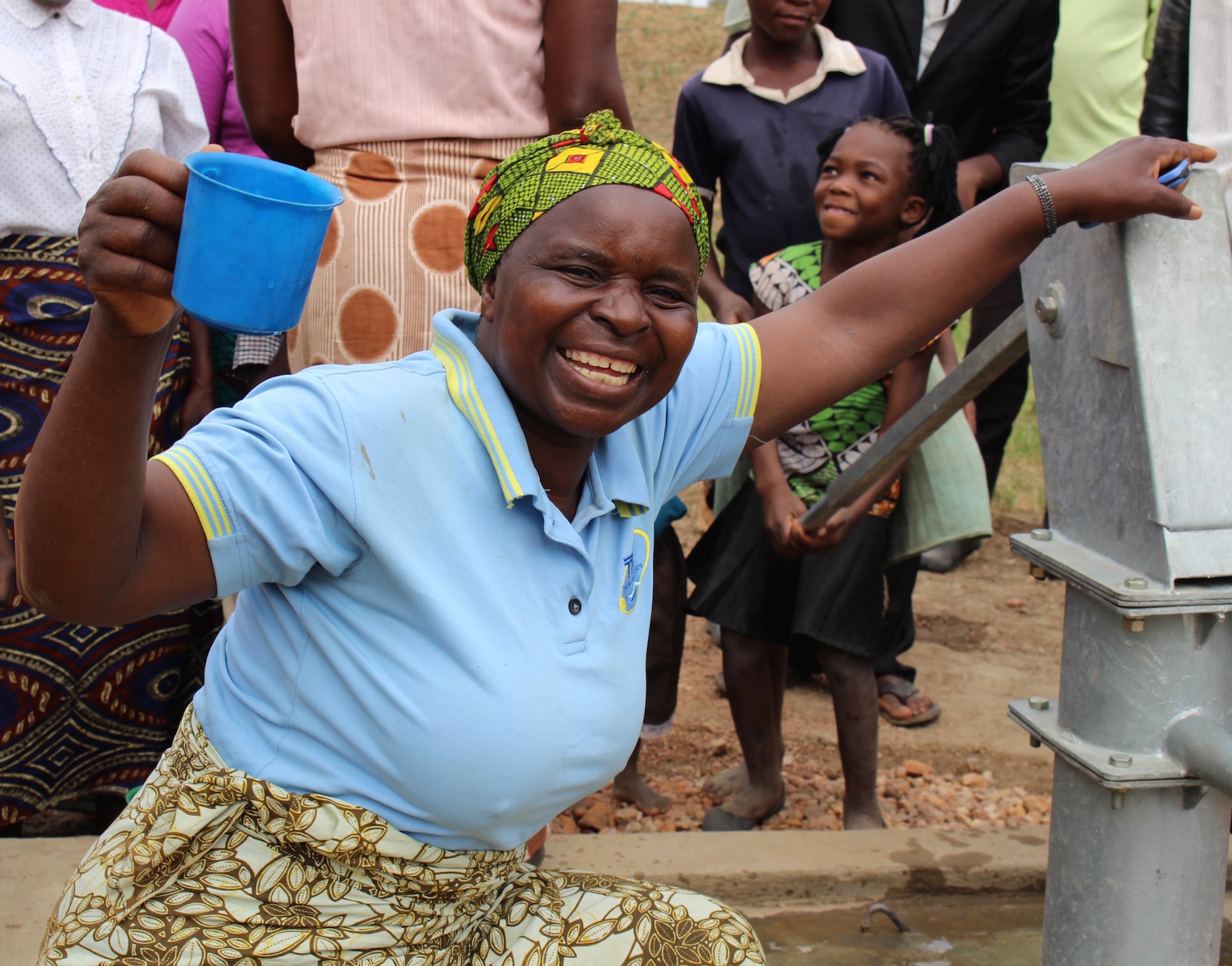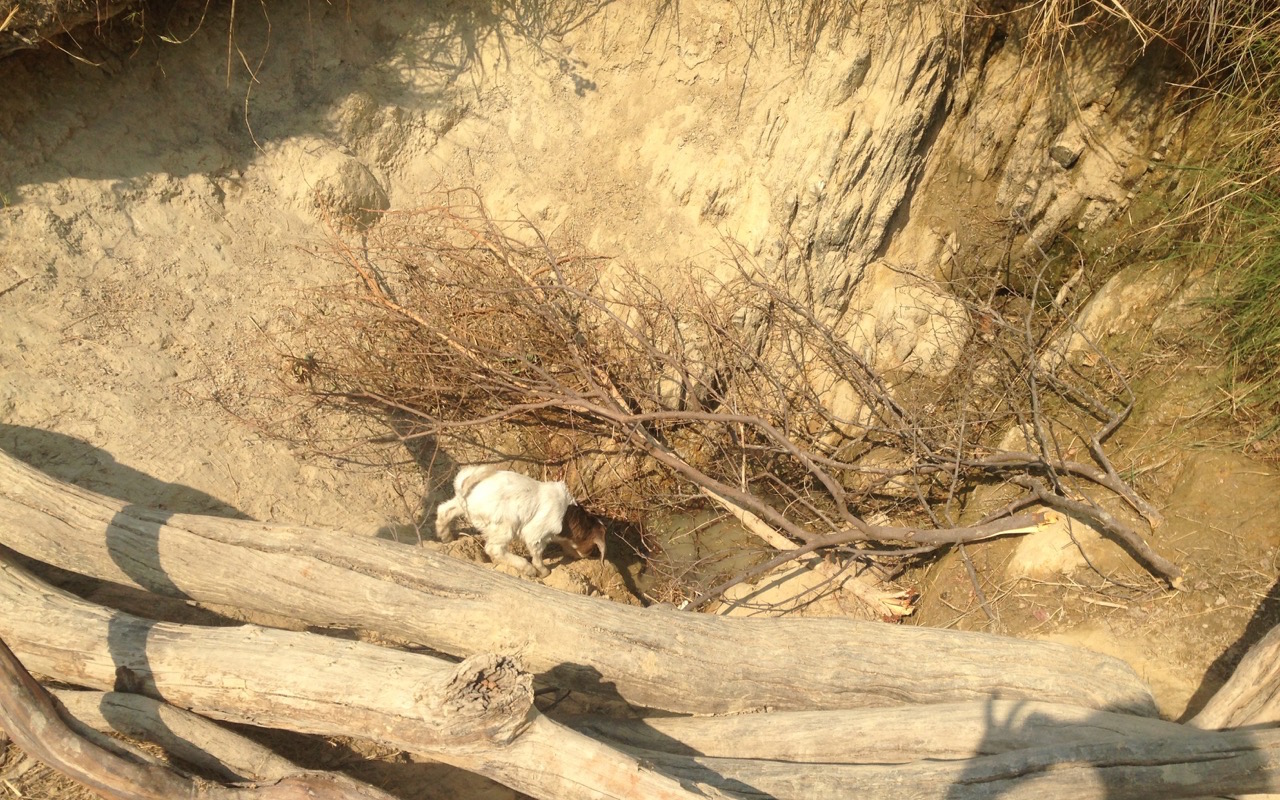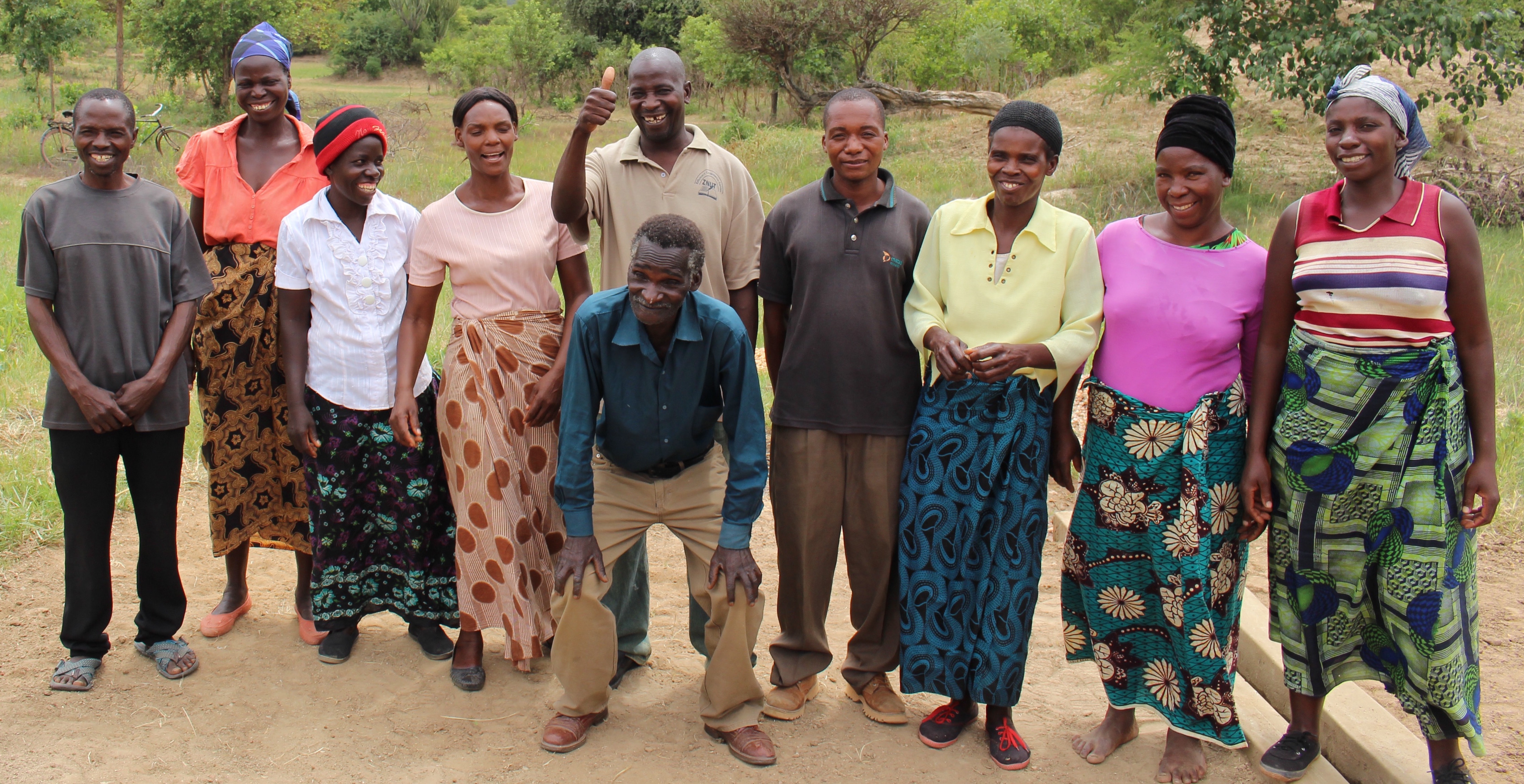

Seedwater Projects in Zambia
Katumbi Borehole
Katumbi is a small village in the Macha Catchment of the Southern Province, Zambia. There, over 200 villagers subsist as farmers growing maize, groundnuts, cotton, squash, and vegetables. Traditional huts and tall mango trees decorate the landscape, where children play and women work in the fields.
Perhaps the single biggest challenge villagers face is water. During the dry season, sparse springs and muddy river water are the only options. During the rainy season, some rainwater can be collected, but dirty river water is still the first option, and water sources made the villagers sick. Despite efforts to keep goats, chickens, and cattle out, the limited spring water is contaminated by animal feces. Sterilizing this water takes even more work, as women walk long distances to collect firewood. The result is nearly constant gastrointestinal distress… with many children suffering from severe diarrhea. The nearest available borehole is between 3 and 5 km away, so walking there and back with large containers (carried on the heads of women) is time consuming, not to mention exhausting. Thus, the people are, more often than not, drinking from the murky river and unclean spring. My longtime friend and community leader, Daphious, who had accompanied me to Katumbi, asked if I could help. I was quiet. Here, one grandmother showed me a bucket. For drinking, she pointed. It was a green container with water so dirty you couldn’t see the bottom.

After my last visit, I had trouble sleeping. At night I would remember how just a few minutes ago I had turned on the sink to brush my teeth… clear cool water had burst forth and undoubtedly splattered on the floor. I didn’t have to do anything for that water. I didn’t have to walk miles and carry it on my head. I didn’t have to boil it or treat it with chlorine. It was just there. And my tap had never been dry. How basic is water? The water table in Macha is high… a cruel joke for the villagers who can’t reach below the earth’s surface to grab it. The best option for potable water is a drilled borehole. I decided I needed to share this feeling with Toby and take him to Katumbi.
Soon after, Toby and I decided that we had to do something. Before making any promises, however, we met with the community. We talked about water, the issues, and how to make a borehole sustainable. The village has experience forming and maintaining committees to oversee community projects. Immediately we knew that they already had a plan. A water committee, responsible for obtaining a small fee from each participating community member for use of the borehole, would be formed. These fees are intended for use in the event that the borehole breaks or anything requires repair. The committee would be composed of equal parts men and women, as voted in by the Katumbi village. Each member would serve for 1 year. They would also appoint a treasurer and secretary. The borehole water is not to be used for agriculture. Instead, each family will be allotted enough water for drinking, cooking, and washing on a daily basis. For every question we asked, the villagers had a well-thought-out answer. After more conversation and thought, Toby and I realized that with what is a relatively small amount of money on our part (in the whole scheme of our lives) we could help change the lives of 200 people in Katumbi. And we could do so in a way that we believe will be sustainable long-term, benefiting everyone.

Together with Daphious, we coordinated a local company to come and drill a borehole to a depth of 55 meters, standard for Zambia. Daphious knows a lot about Katumbi (having grown up in Macha) and the processes needed to make village projects last. (Katumbi is quite famous in the area for successfully managing a productive goat breeding project coordinated by Daphious.) His wisdom and guidance was essential. The company we hired also included in the price of the borehole, a hand-pump, a concrete foundation/base, and a training session for villagers on borehole maintenance. Additionally, the design moves spilled water away from the pump into a drain to reduce stagnant water from collecting, attracting insects, and growing bacteria. Out of the spout would come pure, potable drinking water. The plan was set, and with deep breaths, we transferred the money.
I am happy to report that the borehole has been successfully drilled. Last time I was in Katumbi (just two weeks ago), the pipe was in and I was greeted by some of the happiest people I’ve ever seen! The villagers were protecting the pipe from animals with thorny branches and the lookout of children. They were waiting eagerly for the hand pump and concrete slab to be delivered. Daphious called to tell me that they laid the concrete foundation just last week and the pump was installed two days later. Toby and I will be returning to Katumbi in January to see the final product and meet the water committee.